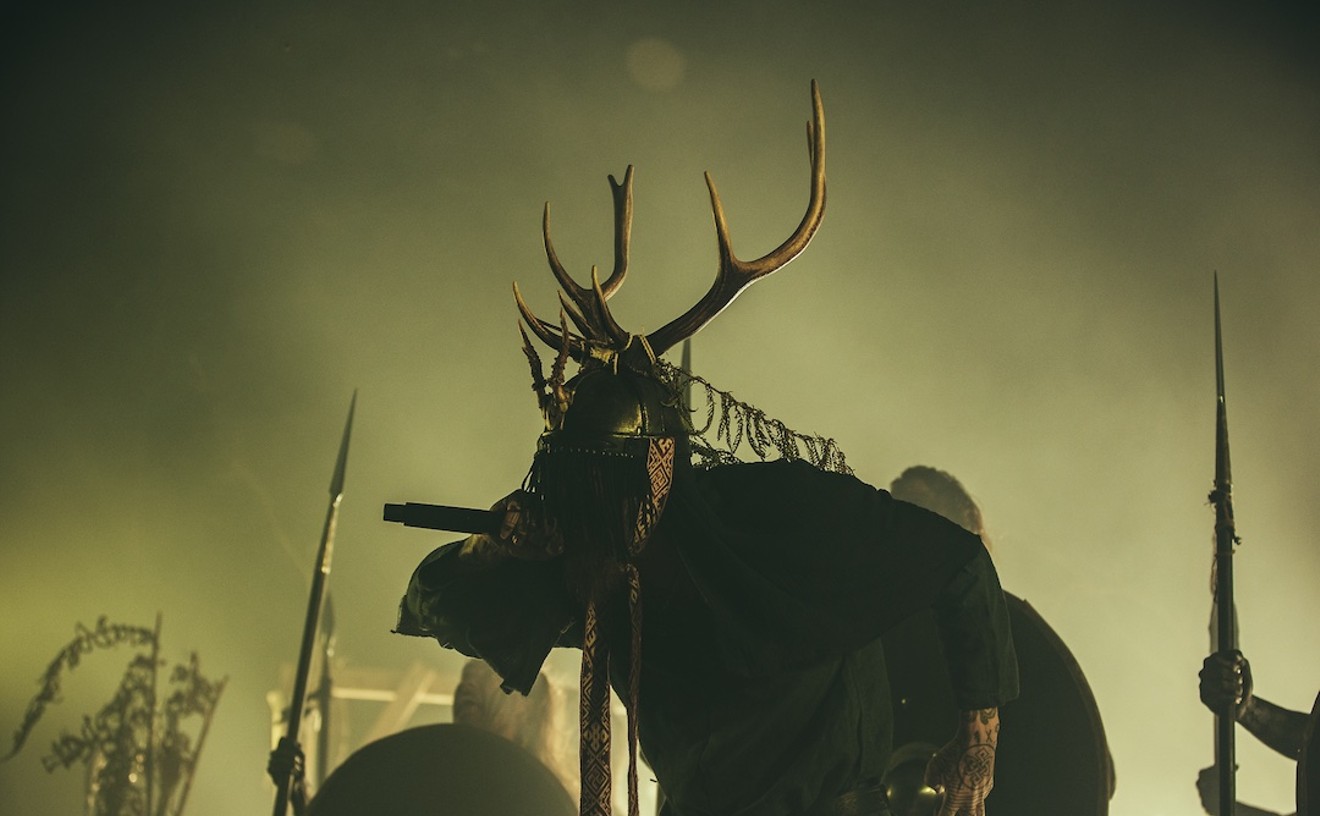Indeed, many fans still expect rock producers to resemble Beatles board man George Martin circa 1967: tall, gaunt, distinguished-looking, suit-wearing, middle-aged--the type of fellow whose sophistication and maturity contrast starkly with the appearance of his youthful charges. But Vig, whose name was on the credits of Nirvana's groundbreaking Nevermind disc (as well as platters by Smashing Pumpkins, Sonic Youth, Freedy Johnston, L7 and loads of other famous folks), hardly conforms to this stereotype. Only his frequent use of the word "kids" to describe listeners hints at the number of years he's got under his belt. Moreover, his longish hair, scraggly beard and perpetually dazed expression leave him seeming little different from performers in the outfits he's supervised.
Now, with Garbage, Vig's literally a part of such a group, along with vocalist/guitarist Shirley Manson and multi-instrumentalists Duke Erikson and Steve Marker. However, he concedes that the act, represented by an intriguing self-titled CD on Almo/Geffen, was conceived as a one-off rather than a going concern.
"When Shirley joined us, we were adamant with the record company that we were not going to tour," he notes. "In fact, we didn't really know what we were going to do. We hadn't finished any of the songs--all we had were ideas. But then we invited Shirley to come and sing on a couple of songs, and we liked her so much--and I think she liked us enough--that she decided to work on the whole record. But it was only over the course of making the album that we began to feel that we had become a band and that the chemistry really worked between us. That was the point where we decided that we needed to go out and meet our public and prove to people that this is not just a hobby."
Actually, that's not quite accurate. At first Vig hoped that the Garbage offering would leap off store shelves on the power of music and videos alone. And in some ways, that proved to be the case; the album earned strong reviews, decent airplay and respectable sales. But for Vig, a man who's grown accustomed to shepherding recordings that sell in the millions, not the thousands, this modest success wasn't enough. "We were probably being naive thinking that we could put a record out and the kids would go out and buy it just because they liked the songs," he allows. "We discovered that you still have to go out and do that grassroots thing and find your audience--that old formula where you go into a city and do press, talk to radio stations and play live. It works.
"People want to see it's for real. They want to see that there are people behind the music and there's passion in it. There's flesh and blood--it's not just concocted in someone's mind."
Despite his Svengali image, Vig has participated in music projects as often as he's overseen them. Raised in small-town Wisconsin, he began taking piano lessons before he was out of elementary school and later added drums to his resume. But he initially saw music as more of a lark than as a viable career. He entered the University of Wisconsin-Madison determined to become a doctor, then spent the next two years realizing that it wasn't a very good idea. He subsequently dropped out in order to serve as the drummer for Spooner, an act that featured Erikson on guitar and vocals. When he re-enrolled in college a short time later, it was as a film student.
"The movies I made were more experimental," he discloses. "Nothing that ever saw the light of day. But over my last two years of school, I also made soundtracks for other student films. And I really got caught up in the sound aspect of film. I loved being in the studio, working all night playing with sound." He adds, "There were no keyboards in the studio--you had to plug in oscillators and filters and make sound purely through manipulation. And that was invaluable to me. It taught me how to create ambient textures and how you can change moods with things that didn't fit into the twelve-tone scale."
Vig got a chance to further develop his studio skills with Spooner. He and Marker, a Spooner fan who recorded some of the combo's early songs, invested in an eight-track mixing board and rented warehouse space that was dubbed Smart Studios. Together they recorded three Spooner albums, plus discs by other area punk bands. By the mid-Eighties, their reputation had spread beyond Wisconsin to signees at numerous indie labels, including Sub Pop, Tough and Go and Twin Tone. But it was Nevermind that lifted Vig into the front ranks of cutting-edge producers and established a sound that still echoes from every modern-rock radio station in the country. The key to the album's sonics, Vig believes, was the decision to eschew the totally naturalistic production beloved by most punks in favor of something more ambitious and complex.
"Nirvana was so powerful live that we had to do things in the studio to make them seem larger than life," he says. "Whether it was doubling guitars or how we compressed drums, we tried to push stuff up in your face at times or pull back to make it sound soft or quiet--to give it a sense of dynamics. In a lot of ways, you have to overexaggerate things in the studio, which a lot of young bands don't always understand. A sense of dynamics is one of the great things about music. You can't always control it, but that's what makes the process so much fun."
In the wake of Nevermind, Vig became one of pop's most in-demand commodities. But he continued to collaborate with Erikson and Marker, often on remix projects that allowed them to fiddle around with sound to their heart's delight. Garbage was conceived as an outlet for these efforts and an opportunity for Vig to venture into areas explored by George Martin and the British producers he inspired. "A lot of the records we've liked over the years have been really European-sounding," he contends. "Echo and the Bunnymen, Joy Division, Roxy Music--that stuff to me always seemed really cool and exotic in a way that American records that have a more documentary-like approach don't. They were a big inspiration."
As the voice of this assemblage, the three friends picked Manson, known for her membership in two failed Brit-pop combos, Goodbye Mr. Mackenzie and Angelfish. It turned out to be a canny choice. While critics and navel-gazers are captivated by Garbage's dense, noisy backdrops, which drip with the influence of techno, trip-hop and other au courant styles, less twerpy sorts are drawn to Manson, a flamboyant frontwoman with a throaty voice and a distinctive countenance. According to Vig, "She's the focal point. We'll be playing in front of 2,000 kids, and I'll look out and it looks like all 2,000 are watching Shirley and they're not watching me. Which is fine--to me, the music is more important than all the other stuff. Besides, I like being in back playing the drums and seeing all the chaos swirling around the stage. And now I'm enjoying myself even more because I've got this drum sampler that triggers loops and sound effects and samples from the record. And Duke and Steve are both playing MIDI guitars that can drive keyboard sounds and samples, too. We can throw up a hell of a racket."
This combination of elements is effective on CD, and given the frequency with which MTV is airing Garbage's latest video, the Manson showcase "Only Happy When It Rains," a larger public is apt to catch on to the band soon. And if that happens, followers will learn shortly thereafter that Butch Vig in person isn't nearly as impressive as the Butch Vig they've imagined.
"What the band finds funniest," he says, "is that we'll come into a room and there'll be this whisper--'Butch Vig is here.' And I'll almost have to look over my shoulder to try and see who everybody's getting so excited about. And once the kids see me, they usually wonder why they got so excited, too."
Garbage, with Polera. 8 p.m. Tuesday, April 30, Ogden Theatre, 935 East Colfax, $10-$12, 830-2525 or 1-800-444-











